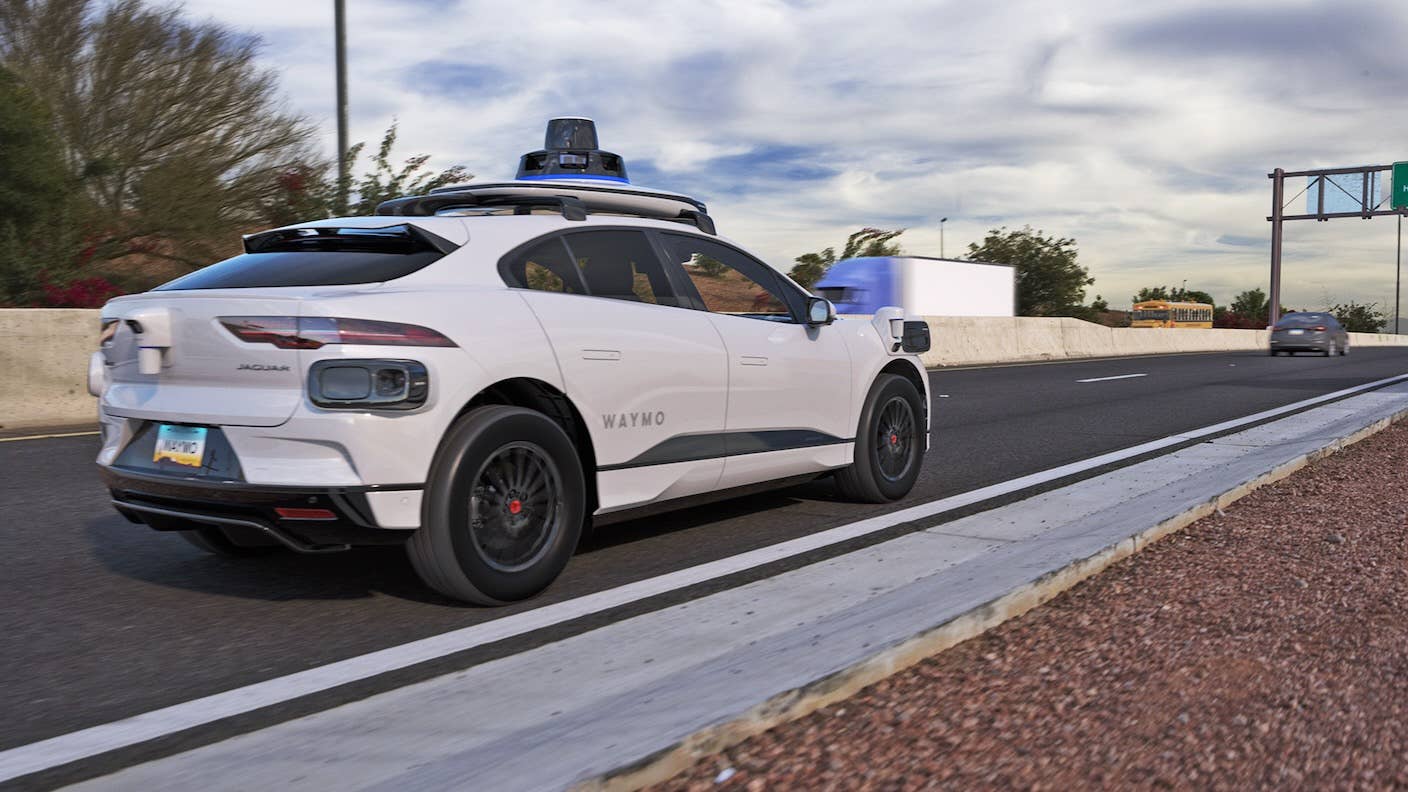Waymo’s Driverless Cars Are Hitting the Highway Sans Safety Drivers in Arizona

Share
In one sense, self-driving cars are a venerable technology. They've been tested on public roads for over a decade. But for much of that time, trials were narrow and deliberate. Only in recent years has anything resembling a commercial product materialized.
Last August, in a big step forward, Waymo and GM's Cruise began offering fully autonomous paid rides around the clock in San Francisco, one of the most challenging cities to navigate. From there, however, the paths of the two leaders in robotaxis parted.
Cruise was involved in a number of increasingly severe incidents during the year, culminating in an episode where a Cruise robotaxi trapped and dragged a pedestrian hit by another vehicle. The GM-subsidiary has since halted operations, and its future is uncertain.
Waymo, however, is pressing forward.
In October, the company expanded its coverage area in San Francisco and opened services to tens of thousands of riders there. It also began offering curbside services at Phoenix's airport, made rides available on Uber, and expanded operations in Los Angeles.
In December, Waymo released data claiming that after 7.1 million miles driven, its cars had caused only three minor injuries and were safer than human-driven cars (though experts believe we'll need hundreds of millions of miles to prove they reduce fatalities).
All this has so far been at slow speeds on city streets. But Waymo announced Monday it's expanding its Phoenix services to include highway travel too.
In a blog post, the company said it's been working towards highway driving for a year, beginning with rides including safety drivers ready to take the wheel should things go south. Now Waymo employees can take fully autonomous rides without a safety driver, provided they give feedback on their experience. If all goes well, Waymo will open highway routes to everyone in the not-too-distant future.
Be Part of the Future
Sign up to receive top stories about groundbreaking technologies and visionary thinkers from SingularityHub.


To back up the decision, Waymo pointed to its safety record and history building and operating self-driving trucks on highways. (The company shuttered its self-driving truck project last year to focus on taxis.) Including highways should also decrease route times for riders—especially from the airport—with some rides taking half the time.
Although highways are simpler to navigate than city streets—where cars contend with twists, turns, signs, stoplights, pedestrians, and pets—the stakes are higher. A crash at 10 or 20 miles per hour is less likely to cause major injury than one at highway speeds. And while it's relatively straightforward (if less than ideal) for a malfunctioning robotaxi to stop or pull to the side of the road and await human help in the city, such tactics won't do on the highway, where it's dangerous for cars to suddenly slow or stop.
But learning to drive on the highway will be a necessary step if robotaxis are to become an appealing, widely used product. After years of testing, the question of whether companies can build a sustainable business out of all that investment is increasingly pressing.
Major players like Waymo have spent billions of dollars and are feeling the pressure to expand as quickly as possible. At the same time, as recent experience with Cruise shows, a series of slip-ups can doom a project. As Waymo scales, it'll have to walk that tightrope for years to come, and it's clear there's very little room for error.
"Cruise’s implosion has left Waymo as the undisputed leader in the driverless taxi market. But it has also heightened public skepticism about self-driving technology in general," tech reporter Timothy B. Lee wrote for Ars Technica in December. "So Waymo is going to have to work hard to convince the public that its technology not only has the potential to make the roads safer in the future, but is already doing so now."
The field is at an inflection point between testing and scaling. What happens next will determine if robotaxis can more broadly win our trust.
Image Credit: Waymo
Jason is editorial director at SingularityHub. He researched and wrote about finance and economics before moving on to science and technology. He's curious about pretty much everything, but especially loves learning about and sharing big ideas and advances in artificial intelligence, computing, robotics, biotech, neuroscience, and space.
Related Articles

This Light-Powered AI Chip Is 100x Faster Than a Top Nvidia GPU

These Robots Are the Size of Single Cells and Cost Just a Penny Apiece

Hugging Face Says AI Models With Reasoning Use 30x More Energy on Average
What we’re reading
